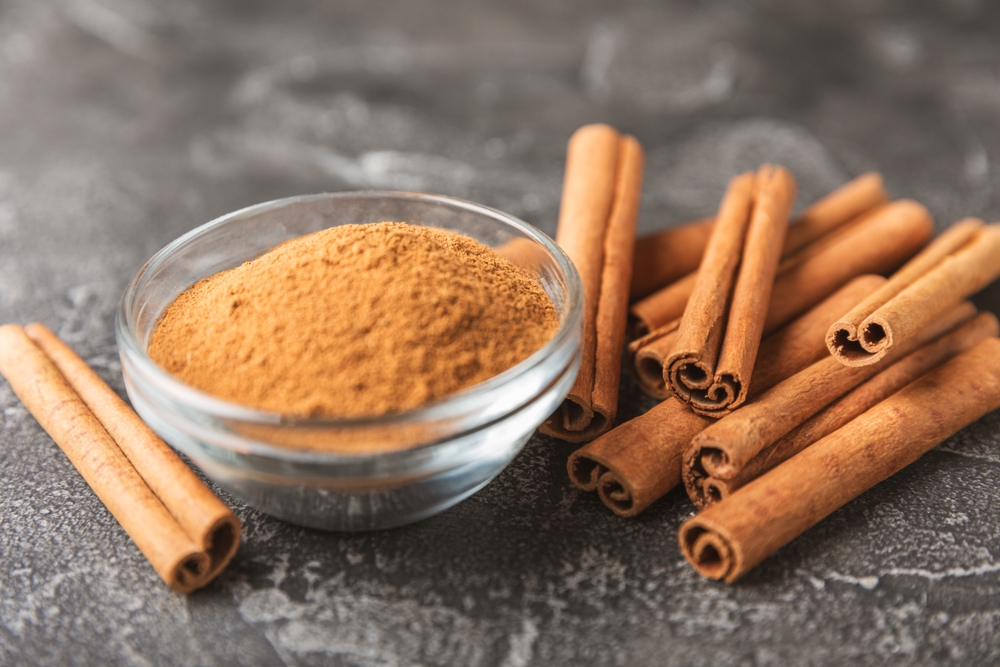That jar of cinnamon sitting innocently in your spice rack might be the culprit behind your mysterious digestive woes. While this aromatic desert spice has been celebrated for its sweet-spicy flavor and purported health benefits, mounting evidence suggests that for many people, cinnamon might be doing more harm than good when it comes to gut health.
You’ve probably sprinkled it on your morning oatmeal, added it to your trendy chai latte, or incorporated it into countless baked goods without a second thought. After all, cinnamon has been touted as a blood sugar balancer and anti-inflammatory superstar. But this popular spice has a darker side that deserves attention, especially if you’ve been battling unexplained digestive issues.
The cassia confusion
The first thing to understand is that not all cinnamon is created equal. What sits in most American spice cabinets isn’t “true” cinnamon at all. The majority of cinnamon sold in the United States is cassia cinnamon, sometimes called Chinese cinnamon, which comes from the bark of the Cinnamomum cassia tree native to China and Southeast Asia.
True cinnamon, or Ceylon cinnamon, comes from the inner bark of the Cinnamomum verum tree indigenous to Sri Lanka. It’s lighter in color, more delicate in flavor, and significantly more expensive than its cassia counterpart. This distinction isn’t just culinary trivia—it has real implications for your gut health.
Cassia cinnamon contains much higher levels of a compound called coumarin, which can be toxic to the liver in high doses and is known to cause digestive distress in sensitive individuals. Many people unwittingly consume cassia cinnamon, unaware that it might be triggering their digestive problems.
The irritant effect
Cinnamon gets its distinctive aroma and flavor from cinnamaldehyde, an organic compound that gives the spice its powerful antimicrobial properties. While these antimicrobial effects are often celebrated as beneficial, they’re not always kind to your digestive system.
The problem lies in cinnamaldehyde’s indiscriminate nature. It doesn’t just target harmful bacteria—it can also disrupt your beneficial gut flora. For people with already compromised gut health or sensitized digestive systems, this disruption can trigger bloating, cramping, and irregular bowel movements.
Cinnamaldehyde is also a known irritant to mucous membranes. Your digestive tract is lined with these sensitive tissues, which can become inflamed when exposed to high concentrations of this compound. The warming sensation you feel when consuming cinnamon isn’t just a pleasant culinary experience—it’s a mild irritation response that can become problematic for sensitive systems.
The FODMAP factor
Another aspect of cinnamon that often flies under the radar is its status as a high-FODMAP food. FODMAPs are fermentable carbohydrates that can trigger digestive symptoms in people with irritable bowel syndrome and other functional gut disorders.
Cinnamon contains fructans, a type of FODMAP that many sensitive individuals have trouble digesting. When these fructans reach the large intestine undigested, they become food for gut bacteria, resulting in fermentation, gas production, and those uncomfortable bloating and cramping sensations.
For the estimated 10-15% of the population with IBS, that daily cinnamon-sprinkled breakfast could be contributing to their digestive misery without them making the connection. Even for those without diagnosed conditions, high-FODMAP foods like cinnamon can sometimes overwhelm the digestive system when consumed regularly or in large amounts.
The histamine connection
Cinnamon is also a histamine-liberating food, meaning it can trigger the release of histamine in the body. While histamine is a natural compound involved in immune responses, some people have impaired ability to break it down, leading to histamine intolerance.
Symptoms of histamine intolerance often mirror digestive issues, including abdominal pain, bloating, diarrhea, and nausea. These symptoms can be particularly pronounced after consuming histamine-rich or histamine-liberating foods like cinnamon.
What makes this connection especially tricky to identify is that reactions can be dose-dependent and cumulative. You might not react to a small amount of cinnamon once in a while, but regular consumption or larger amounts could push you over your personal histamine threshold, triggering symptoms that seem to come out of nowhere.
The seasonal overload
Consider the timing of your digestive distress. Many people notice their gut symptoms worsen during fall and winter—seasons when cinnamon consumption typically skyrockets. From pumpkin spice lattes to holiday cookies, cinnamon becomes nearly ubiquitous in the cooler months.
This seasonal pattern creates a perfect storm for digestive systems already sensitive to cinnamon. The increased exposure, often combined with other dietary changes and holiday stressors, can push your gut past its tolerance point, resulting in a flare-up of symptoms that might be misattributed to other causes.
The coincidence of cinnamon-heavy seasonal treats and cold-weather digestive complaints is rarely made, yet for some individuals, it could be the missing link in understanding their cyclical gut issues.
The testing approach
If you suspect cinnamon might be affecting your gut health, a systematic approach to testing your theory can provide clarity. An elimination period of at least two weeks, avoiding all sources of cinnamon, followed by a careful reintroduction, can help determine if this spice is problematic for your system.
This testing process requires diligence, as cinnamon hides in many products you might not expect. Beyond the obvious baked goods and seasonal beverages, check labels for cinnamon in breakfast cereals, protein bars, supplements, toothpastes, and even some savory dishes like curries and chilis.
Track your symptoms during both the elimination and reintroduction phases. Look not just for obvious digestive complaints but also for subtler signs like changes in energy levels, sleep quality, or even mood, as gut health impacts these areas as well.
The alternatives worth considering
If you discover that cinnamon doesn’t agree with your system, you don’t have to sacrifice flavor entirely. Several alternatives can provide similar warmth and complexity to your culinary creations without the digestive distress.
Ceylon cinnamon, with its lower coumarin content, may be tolerable for some who react to cassia. Its milder flavor requires using more to achieve the same taste impact, but this “true” cinnamon is generally gentler on sensitive systems.
Cardamom offers a similar warming quality with aromatic complexity that works beautifully in both sweet and savory applications. Ginger provides that satisfying heat with the added benefit of actually soothing digestive systems rather than irritating them. Allspice, with its complex flavor profile reminiscent of several spices including cinnamon, can often stand in successfully in recipes.
The path to better gut health often involves detective work and personal experimentation. While cinnamon is celebrated for certain health properties, no food works universally well for everyone. Listening to your body’s responses and being willing to question even commonly praised “health foods” might be the key to resolving persistent digestive issues.
Next time you reach for that cinnamon shaker, consider whether this desert spice might be secretly undermining your digestive wellness. Your gut might thank you for the break from this popular but potentially problematic ingredient.

















